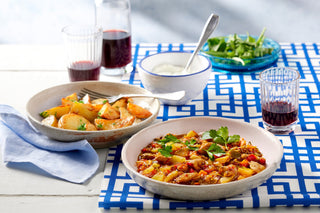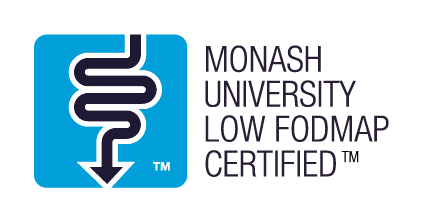May Is Mediterranean Diet Month – Here’s Why It’s Worth Celebrating
May marks Mediterranean Diet Month, and what better time to explore this iconic and time-tested way of eating than now? Loved for its flavour, simplicity, and long list of health benefits, the Mediterranean Diet is more than just a trend—it’s a lifestyle.
What Is the Mediterranean Diet?
Despite the name, the Mediterranean Diet isn’t a strict diet plan—it’s a way of eating (and living) rooted in tradition and shaped by the idea of eating what you grow. Originating in the olive-growing regions of Greece and Southern Italy, it celebrates seasonal produce, local ingredients, and time-honoured cooking methods.
Recognised by UNESCO as part of the Intangible Cultural Heritage of Humanity¹, the Mediterranean Diet is defined by “a set of skills, knowledge, rituals, and traditions for harvesting, fishing, conserving, processing, cooking and sharing food.” It’s been praised as one of the most popular diets in the world², with a growing body of research highlighting its many nutritional benefits³.
While traditional versions were naturally low in saturated fat and rich in healthy vegetable oils (especially those high in omega-3s), modern interpretations define the Mediterranean Diet as one rich in vegetables, olive oil, whole grains, fish, fruit, moderate amounts of wine and dairy, and limited red meat or sweets.
Although each Mediterranean country brings its own flavour to the table, common themes include:
Mediterranean Diet Basics
-
Fill your plate with plants: Veggies, legumes, pulses, and nuts are staples.
-
Choose whole grains: Think oats, barley, brown rice and wholegrain breads.
-
Embrace healthy fats: Olive oil and olives are key, along with avocado and its oil. These fats help increase monounsaturated fat intake while limiting saturated fat⁵.
-
Fish twice a week: Especially oily fish like salmon, sardines or mackerel.
-
Eat less meat: Limit red and white meat to a few times a month (no more than 4–5 servings)⁵.
-
Enjoy fruit daily: Fresh is best, but dried fruit and nuts also make great snacks.
-
Go easy on dairy: Favour cheese (hello, feta) and natural yoghurt in moderation.
-
Sip wine mindfully: One glass a day with meals, if suitable for your lifestyle⁵.
-
Save sweets for special occasions.
-
Flavour with herbs and spices: A great way to reduce added salt.
-
Make meals social: Food is best enjoyed with friends and family.
-
Stay active: Daily movement—even just a walk—is part of the lifestyle.
Why Is It So Popular?
The Mediterranean Diet gained early attention when a Swedish researcher observed declining heart disease rates following WWII due to food shortages and rationing of animal products⁶.
This sparked the Seven Countries Study⁷, which compared dietary patterns and heart disease across the US, Finland, Netherlands, Italy, former Yugoslavia, Greece, and Japan. The results? Countries with diets lower in animal products and higher in plant-based foods and moderate dairy had significantly lower rates of coronary heart disease—up to 16%⁷. These findings closely align with the Mediterranean approach.
But let’s be clear—it’s not just a diet. It’s a broader lifestyle that celebrates eating well, staying active, and sharing meals with loved ones.
Dineamic and the Mediterranean Diet
At Dineamic, we take inspiration from the Mediterranean way of eating. You’ll see it in our use of olive oil, herbs and spices, our love for Aussie tomatoes, and our “local wherever possible” approach. These aren’t just flavour choices—they’re health choices.
Want to get started? Try:
-
Swapping your usual oil for Extra Virgin Olive Oil.
-
Snacking on Greek yoghurt with nuts instead of a chocolate bar.
-
Eating dinner around the table instead of in front of the TV.
Try It This May
Mediterranean Diet Month is the perfect time to give it a go. Start small, build gradually, and focus not just on what you eat—but how you eat.
Got a favourite Mediterranean-inspired meal or a tip for getting started? Share it in the comments—we’d love to hear!
References
-
Dernini S, Berry E. Mediterranean Diet: From a healthy diet to a sustainable dietary pattern. Front Nutr. 2015;2:15.
-
Martínez-González MA, et al. Mediterranean food pattern and the primary prevention of chronic disease: recent developments. Nutr Rev. 2009;67(Suppl 1):S111–6.
-
Dontas AS, et al. Mediterranean diet and prevention of coronary heart disease in the elderly. Clin Interv Aging. 2007.
-
Bach-Faig A, et al. Mediterranean diet pyramid today: Science and cultural updates. Public Health Nutr. 2011.
-
Keys A. Coronary heart disease in seven countries. Circulation. 1970;41(Suppl I):211.









